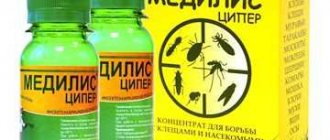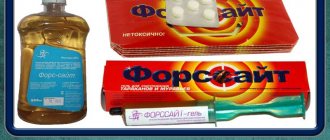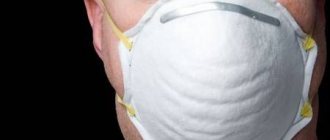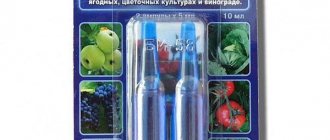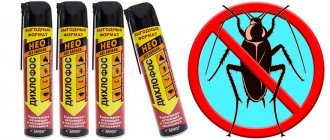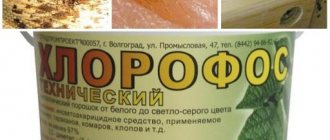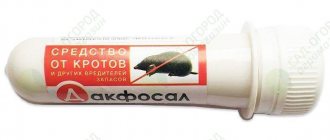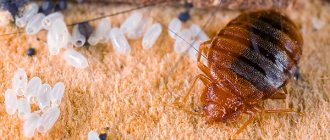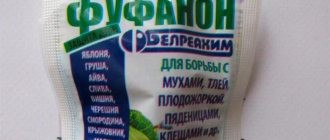The active substance (AI) of a number of insecticides, deltamethrin, belongs to the chemical class of pyrethroids, and within this class to type II (cyanopyrethroids). Deltamethrin preparations are mostly used for sanitary and household disinfestation and in medicine as a remedy for pubic and head lice. The first generation of well-known crayons and pencils against cockroaches and bedbugs contained exactly this DV. Currently, in the USA and EU, deltamethrin as an insecticide is considered obsolete due to the massive formation of communities of harmful insects resistant to it (in the USA, up to 90% of the recorded bed bug populations are genetically resistant to it) and its high danger to people. In the exemplary prosperous West, lice is perhaps the most common childhood disease; in a quite decent hotel, for an additional fee, they can offer you a “No bags” room (without bedbugs), and among the inhabitants of respectable penthouses, it is somehow not even customary to pay attention to cockroaches. Moreover, the “greens” can sue the crushed, but are no less ubiquitous. But in countries and regions that are not mindlessly addicted to pesticides, deltamethrin is still used quite widely.
Composition and manufacturing features of the substance
Deltamethrin belongs to the class of pyrethroids; it is an active substance and a drug that is produced in the form of a 2.5% emulsion concentrate. It has a contact and intestinal effect and is used for spraying crops and wet disinfection of buildings.
Manufacturers produce only one isomer of the substance, but it is quite effective, and drugs based on it are inexpensive. Compared to other substances of the class, which also contain chrysanthemum acid, the radicals in the deltamethrin molecule are represented by bromine atoms. Deltamethrin is produced in production by reacting esters of permethric acid and a complex of aluminum bromide with 1, 2-dibromoethane.
Other FAS
Deltamethrin appears to be preparing to share the fate of dichlorvos. Its name, as you know, has become a household name, and modern dichlorvos contains no organophosphorus compounds (OPS) at all.
Current dichlorvos are produced on the basis of 2 or more pyrethroids. The same applies to no less popular sanitary and household insecticides FAS (see figure): gels, powders, modified tablets, crayons and pencils for cockroaches.
Modifications of sanitary and household insecticides FAS
In their composition, deltamethrin is present either as an auxiliary active ingredient, or it is not present at all. But the “new FAS” work well, see the last video:
Terms of use
Products based on deltamethrin can be used on agricultural land and personal plots against various crop pests. It is also used for disinfecting premises.
In agriculture
Preparations containing deltamethrin are not washed off by rain. In agriculture, it is effective in controlling pests of wheat, corn, barley, potatoes, sugar beets, rapeseed and other crops.
See also
Instructions for the use of drugs containing fenthion, how they work and analogues
Read
On a personal plot
In private household plots it is used to destroy pests that settle on vegetable and fruit crops.
Expert opinion
Zarechny Maxim Valerievich
Agronomist with 12 years of experience. Our best country expert.
Ask a Question
Cabbage, tomatoes growing in open ground, apple trees and potatoes are treated with deltamethrin preparations.
Pest control
Residential and commercial premises, transport and public catering facilities are treated with products containing this substance. Used against cockroaches, mosquitoes and flies, against bedbugs.
Phytotoxicity
May have some toxic effects on plants. A 0.01% concentrated solution may cause burns on young leaves of Brussels sprouts.
Deltamethrin reduces the accumulation of nitrogen in bean leaves for 50 days after spraying and affects the production of vitamin C by the plant.
Drugs
As of 2022, the following are registered in the Russian Federation. insecticides containing deltamethrin: Atom, Decis Expert, K-Obiol, Proteus (all for agricultural farms), FAS for private household plots, Biorin, Bifethrin, K-Otrin VG-250, K-Otrin SK-50, Legion gel, Mittox-antimol, FAS for disinfection services in tablets (all for professional pest control).
FAS insecticides for personal plots and professional disinfestation
Three of them are widely available for sale:
- Atom CE 2.5% DV (25 g/l). Manufacturer Listerra (Panama). It is actively promoted in the agrochemical market as a remedy against harmful pests of grain, fruits and vegetables, oilseeds and industrial crops. The price is low, ok. 1500 rub./l for the same time. The Russian distributor recently rebranded, i.e. “from under” another leading Listerra.
- FAS for private household plots. Russian product (“Garden Pharmacy”). Water-soluble tablets against the Colorado potato beetle and caterpillars (item A in the figure). The DV content is the same (1% or 10 g/kg). The only difference is in the packaging and dosage, see below.
- FAS professional sanitary and household. Also Russian (“World of Cleanliness”). Also water-soluble tablets, 60 pieces in a bottle, pos. B. The content of DV is the same, but is not interchangeable with FAS for private household plots, because the weight of one tablet and the composition of ballast substances are different.
Note : FAS tablets against cockroaches are still effective in most regions of the Russian Federation, see video:
Video: FAS tablets with deltamethrin against red cockroaches
Toxicological features
The pyrethroid deltamethrin is very dangerous for bees, other insects, domestic and wild animals, humans, and fish. It has weak allergenic properties and is toxic to embryos.
Deltamethrin is unstable in the environment. If preparations containing deltamethrin are used correctly, it does not accumulate in plants and soil. But in soils with a high organic content it is more stable than in others and takes longer to decompose. Deltamethrin half-disintegrates in soil in 12-50 days. The decay time depends on the type of soil and its temperature.
Toxic effect
Products containing deltamethrin are generally moderately toxic according to the toxicity class; if used in doses recommended by the manufacturer, the substance will not have a harmful effect on the body, accumulate in tissues, or be excreted in milk. There is evidence that the substance deltamethrin can be deposited in adipose tissue and remain there for 2 weeks or more.
See also
Instructions for using the Aktara insecticide, what pests it helps against
Read
Signs of poisoning
The substance deltamethrin is irritating to the skin and mucous membranes; if you apply it the next time, non-healing wounds may form. Characteristic signs of pyrethroid poisoning are salivation and convulsions. In animals, signs of toxic damage are a depressed state, refusal to eat, a rise in temperature, yellow mucous membranes, a change in the color of urine, which becomes brown, and difficulty urinating. The amount of milk in cattle decreases and it turns yellow.
The first signs of poisoning are excitement, followed by depression, trembling, decreased skin and nervous excitability, and then paralysis. Symptoms disappear within 1-2 weeks. Deltamethrin does not have a mutagenic effect.
How to recognize acute intoxication
The acute phase of poisoning in humans can be recognized by ataxia, severe salivation, decreased activity, and convulsions. If such symptoms appear, you need to immediately stop working, leave the area being treated or move away from the area. If your condition worsens, seek medical help.
If you inhale drugs containing pyrethroids, you should immediately go outside into fresh air. If the solution gets into your eyes, rinse them under running water. If deltamethrin gets on the skin, remove it with cotton wool without rubbing it on the skin, then wash it with soap and then with clean water.
If you accidentally get the solution inside, you should rinse your mouth and be sure to drink the drug with activated carbon (take 1 g of carbon per 10 kg of body). Vomiting cannot be induced. For neuralgic symptoms, take 10-20 mg of Diazepam. Treatment of deltamethrin poisoning is symptomatic.
deltamethrin: behavior in the environment
| Index | Meaning | Source / Qualitative indicators / Other information | Explanation | |
| Solubility in water at 20oC (mg/l) | 0.0002 | A5 | Short | |
| Solubility in organic solvents at 20oC (mg/l) | 450000 | A5 - Acetone | — | |
| 175000 | A5 - Xylene | — | ||
| 8150 | A5 - Acetone | — | ||
| 2470 | A5 - n-heptane | — | ||
| Melting point (oC) | 101 | A5 | — | |
| Boiling point (oC) | Decomposes to a boil | A5 | — | |
| Decomposition temperature (oC) | — | — | — | |
| Flash point (oC) | Fire hazard is not high | A5 | — | |
| Partition coefficient in the octanol/water system at pH 7, 20oC | P: | 3.98 X 1004 | Calculated | — |
| Log P: | 4.6 | A5 | High | |
| Specific Gravity (g/ml) / Specific Gravity | 0.55 | L3 | — | |
| Dissociation constant (pKa) at 25oC | Not determined | A5 | — | |
| Note: does not dissociate | ||||
| Vapor pressure at 25oC (MPa) | 0.0000124 | A5 | Intermediate state | |
| Henry's law constant at 25oC (Pa*m3/mol) | 3.10 X 10-02 | A5 | Not volatile | |
| Henry's law constant at 20oC (dimensionless) | 4.20 X 10-06 | K3 | Moderately volatile | |
| Decay period in soil (days) | DT50 (typical) | 13 | A5 | Unstable |
| DT50 (laboratory at 20oC): | 26 | A5 | Unstable | |
| DT50 (field): | 21 | A5 | Unstable | |
| DT90 (laboratory at 20oC): | 87 | A5 | — | |
| DT90 (field): | 60 | A3 | — | |
| Note: | According to laboratory studies of the European Union, DT50 is 18-35 days, DT90 range 58-117 days, in field conditions DT50 1-4 wks with realistic estimate of 3 wks (German), DT90 estimates range 1 month to 1 year; Other sources: 104 days (DW4) | |||
| Aqueous photolysis DT50 (days) at pH 7 | Meaning: | 48 | A5 | Stable |
| Note: | — | |||
| Aqueous hydrolysis DT50 (days) at 20oC and pH 7 | Meaning: | Stable | A5 | Very resistant |
| Note: | pH sensitive: Stable at pH 5 to 7, DT50 31 days at pH 8, 2.5 days at pH 9, 25 degC | |||
| Water deposition DT50 (days) | 65 | A5 | Medium fast | |
| Only aqueous phase DT50 (days) | 17 | A5 | Slowly | |
| Potential leaching index GUS | -3.35 | Calculated | Low leachability | |
| Index of increase in concentration in groundwater SCI (µg/l) at an application dose of 1 kg/ha (l/ha) | Meaning: | 5.35 X 10-03 | Calculated | — |
| Note: | Estimated concentrations of chemicals with Koc Values greater than 9995 ml g-1 are beyond the scope of the regression data used in SCI-GROW development. If there are concerns for such chemicals, a higher tier groundWater exposure assessment should be considered, regardless of the concentration returned by SCI-GROW | |||
| Potential for particle bound transport index | — | Calculated | Average | |
| Koc - organic carbon partition coefficient (ml/g) | 10240000 | A5 | Doesn't move | |
| pH stability: No | ||||
| Note: EU dossier Koc range 460000-16300000 mL/g | ||||
| Freundlich adsorption isotherm | Kf: | 2.44 | R4 | — |
| 1/n: | 1.1 | — | ||
| Note | soil with 68% loam, 24% silt, 8% clay, pH 6.5, OC=2.1% | |||
| Maximum UV absorption (l/(mol*cm)) | [267, 271 and 8nm, Low to very low absorption at 290-0nm] | A5 | — | |
The main products of pesticide decomposition:
| Metabolite | Education environment | Estimated maximum fraction distribution | Compliance with Directive 91/414 | |
| decamethrinic acid | the soil | 0.230 | main decomposition product, corresponds to | |
| 3-phenoxybenzoic acid | the soil | — | ||
Other known pesticide degradation products:
| Decomposition product name and link | Other names | Educational environment/level | Estimated maximum fraction distribution |
| 3-(4-hydroxyphenoxy)benzoic acid | 4'HO3PBA | a=soil; b=Plant; c=Animal | b=0.001 |
| 4-hydroxydeltamethrin | — | Plant | 0.003 |
| 3-phenoxybenzoic acid | — | Animal | 0.03 |
Negative effects
Frequent vomiting is possible.
Deltsid is usually well tolerated and does not cause any side symptoms. However, when treating a cat with hypersensitivity to the components of the solution, the following allergic reactions may occur:
- nausea;
- urge to vomit;
- muscle tremors;
- apathy;
- excessive secretion of saliva.
A cat may experience similar symptoms if it overdoses on Deltsid. In this case, you will need to give your pet an anti-allergenic medication and take measures aimed at removing the medication from the body. Enterosorbents that reduce the toxic effects of the pyrethroid deltamethrin will cope well with this. Additionally, the remaining solution should be thoroughly rinsed with water and the cat should be bathed with animal shampoo.
Additional recommendations
When using the antiparasitic drug “Deltsid”, it is important to follow these rules:
- Wear rubberized gloves and a protective mask.
- Treat your four-legged pet outdoors or in a well-ventilated area.
- Do not pick up or pet the treated purr for 48 hours, and do not allow small children near the animal.
- After manipulation, wash your hands thoroughly with soapy water and rinse your mouth.
- During the treatment, it is prohibited to eat, smoke and drink.
- The container after “Deltsid” should be filled with a 3-5% soda ash solution for 6 hours, and then rinsed with running water. In the future, this container should not be used in everyday life.
- The drug should be stored as far as possible from children and animals.
Doctors insist that you cannot use a solution that has expired.
deltamethrin: ecotoxicity
| Index | Meaning | Source / Qualitative indicators / Other information | Explanation | |
| Bioconcentration factor | BCF: | 1400 | A5 High risk, potential to bioaccumulate | Threshold for concern |
| CT50 (days): | Not available | — | ||
| Bioaccumulation potential | — | Calculated | High | |
| Mammals - Acute oral LD50 (mg/kg) | 87 | A5 Rat | High | |
| Mammals - Short-term food NOEL | (mg/kg): | 2.5 | A5 Rat | High |
| (ppm food): | — | — | ||
| Birds - Acute LD50 (mg/kg) | > 2250 | A5 Virginia quail | Short | |
| Birds - Acute toxicity (CK50 / LD50) | > 5620 ppm | A5 Virginia quail | — | |
| Fish – Acute 96 hour CK50 (mg/l) | 0.00026 | A5 Rainbow trout | High | |
| Fish - Chronic 21 day NOEC (mg/l) | A5 Rainbow trout | — | ||
| Aquatic invertebrates - Acute 48 hour EC50 (mg/l) | 0.00056 | A5 Daphnia magna (Daphnia major, Large water flea) | High | |
| Aquatic Invertebrates - Chronic 21 day NOEC (mg/L) | 0.0041 | A5 Daphnia magna (Daphnia major, Large water flea) | — | |
| Aquatic crustaceans - Acute 96 hour CK50 (mg/l) | 0.0000017 | F3 Mysis shrimp | High | |
| Bottom microorganisms - Acute 96 hour CK50 (mg/l) | — | — | — | |
| Bottom microorganisms - Chronic 28 day NOEC, static, Water (mg/l) | 0.01 | A5 Chironomus mosquito | Moderately | |
| Benthic microorganisms - Chronic 28 day NOEC, Sediment (mg/kg) | — | — | — | |
| Aquatic plants - Acute 7 day EC50, biomass (mg/l) | — | — | — | |
| Algae - Acute 72 hour EC50, growth (mg/l) | 9.1 | L2 Unknown species | Moderately | |
| Algae - Chronic 96 hour NOEC, growth (mg/l) | — | — | — | |
| Bees - Acute 48 hour LD50 (µg/individual) | 0.0015 | A5 Contact | High | |
| Soil worms - Acute 14-day CK50 (mg/kg) | > 1290 | A5 | Short | |
| Soil Worms - Chronic 14-Day Maximum Non-Effective Concentration, Reproduction (mg/kg) | — | — | — | |
| Other soil macroorganisms, such as springtails | LR50 / EC50 / NOEC / Action (%) | — | — | — |
| Other Arthropods (1) | LR50 (g/ha): | — | — | — |
| Action (%): | 100 | Lethal dose: 13.5 g/ha A3 Coccinella septempunctata, larvae | Harmfulness | |
| Other Arthropods (2) | LR50 (g/ha): | — | — | — |
| Action (%): | 100 | Parasitism Dose: 13.5 g/ha, day 7 A4 Trichogramma cacoeciae (adult) | Harmfulness | |
| Soil microorganisms | Nitrogen mineralization: no significant effect Carbon mineralization: no significant effect | A5 [Dose: 0.375 kg/ha] | — | |
| Available data on the mesoworld (mesocosm) | NOEAEC mg/l: | 0.0032 | A5 Water community | — |
| NOEAEC mg/l: | — | — | — | |
deltamethrin: translations from other languages
| Language | Translation |
| English | deltamethrin |
| French | deltamethrine |
| German | Deltamethrin |
| Danish | deltamethrin |
| Italian | deltametrina |
| Spanish | deltametrin |
| Greek | deltamethrin |
| Slovenian | deltametrin |
| Polish | deltametry |
| Swedish | deltametrin |
| Hungarian | deltamethrin |
| Dutch | deltamethrin |
Site last updated: Friday 18 February 2011
Instructions for use
It is important to correctly use the highly effective drug against parasites “Deltsid”, otherwise the required results may not be expected from it, and there is also a risk of poisoning the pet, after which it may even die. Therefore, to prevent the cat from being poisoned, you must first dilute the concentrated solution with water. So, if the owners decided to bathe their pet to get rid of parasites, then 1 amp. "Deltsida" is diluted in 6 liters of water.
Delcid in ampoules for treating cats by spraying should be diluted in 1.6 liters of liquid. They begin to treat the pet from the head, then moving throughout the body, paying special attention to the places where external “freeloaders” most often hide. During the procedure, in order to prevent poisoning of the pet, it is important to avoid getting the solution on the mucous membranes, so the nose, visual organ and oral cavity of the purr must be protected. The dosage of the emulsion is calculated based on the weight of the cat; for each kg there is 5-10 ml of a diluted solution.
